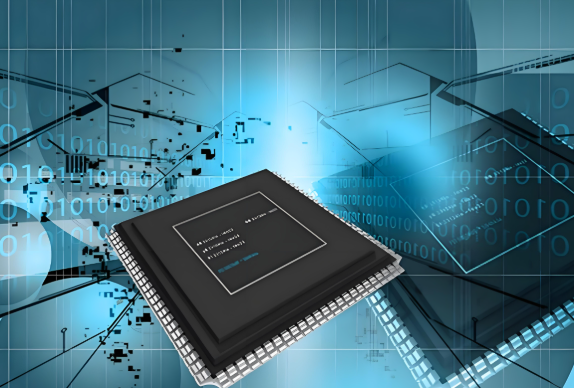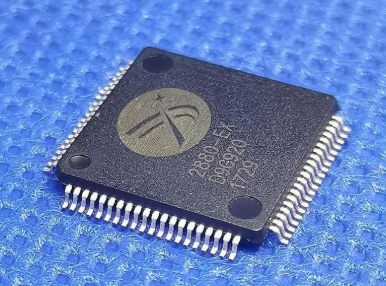Electronic Devices and Components: The Backbone of Modern Technology
Introduction
In the contemporary digital era, electronic devices and components form the fundamental infrastructure that powers our daily lives, drives innovation, and connects the global community. From the simplest resistor in a child’s toy to the most complex integrated circuits in supercomputers, these elements are the invisible yet indispensable cogs in the machinery of modern civilization. The term “electronic devices and components” encompasses a vast universe of parts that manipulate the flow of electrons to perform specific functions, such as amplification, switching, or oscillation. This ecosystem is not static; it is in a state of perpetual evolution, pushing the boundaries of what is possible in computing, communication, healthcare, and automation. Understanding this landscape is crucial for engineers, hobbyists, and businesses alike. For those navigating this complex supply chain, platforms like ICGOODFIND have emerged as vital tools, streamlining the process of sourcing reliable components in a dynamic and often challenging market. This article delves into the core aspects of electronic devices and components, exploring their types, applications, and the critical role they play in shaping our technological future.

The Fundamental Building Blocks: Active and Passive Components
At the heart of every electronic system lie its basic components, broadly categorized into active and passive devices. Understanding this distinction is the first step toward mastering electronics.
Passive Components are the workhorses that do not require an external power source to operate and cannot introduce energy into the circuit. Their primary function is to manage the flow of electrical energy. The most common examples include:
- Resistors: These components oppose the flow of electric current, providing a specific amount of resistance. They are used to control current levels, divide voltages, and bias active elements like transistors. Their value, measured in Ohms (Ω), is critical for setting the operating conditions of a circuit.
- Capacitors: Acting as tiny rechargeable batteries, capacitors store and release electrical energy in an electric field. They are essential for filtering noise from power supplies, coupling AC signals between amplifier stages, and tuning resonant circuits in radios and oscillators. Their capacity is measured in Farads (F).
- Inductors: Typically coils of wire, inductors store energy in a magnetic field when current passes through them. They resist changes in current flow, making them invaluable in power supplies for filtering and in conjunction with capacitors to create tuned circuits for frequency selection.
Active Components, in contrast, are the decision-makers of the electronic world. They can control the flow of electricity and are capable of amplification, which is the process of increasing the power of a signal. All active devices require a source of energy to function.
- Transistors: Arguably the most important invention of the 20th century, transistors act as electrically controlled switches or amplifiers. They are the fundamental building blocks of modern digital circuits. Billions of transistors can be fabricated on a single silicon chip to form microprocessors and memory chips, enabling complex computational tasks.
- Integrated Circuits (ICs): An IC is a collection of electronic components—transistors, resistors, capacitors—fabricated onto a single small chip of semiconductor material. This miniaturization has enabled the creation of powerful microprocessors, memory chips, and specialized logic devices that are compact, reliable, and efficient.
- Diodes: These are two-terminal devices that allow current to flow easily in one direction while blocking it in the opposite direction. They are crucial for converting alternating current (AC) to direct current (DC) in power supplies. Light-Emitting Diodes (LEDs) are a specialized type that emits light when current passes through them.
The synergy between active and passive components allows designers to create everything from simple LED flashers to sophisticated supercomputers. The precise selection and integration of these parts determine the functionality, efficiency, and reliability of the final electronic device.
From Silicon to System: The Manufacturing and Integration Process
The journey of an electronic component from a raw material to a part of a sophisticated system is a marvel of modern engineering. This process involves intricate design, precise manufacturing, and complex integration.
The process begins with Semiconductor Fabrication. The most common material used is silicon. Ultra-pure silicon crystals are grown and sliced into thin wafers. Through a series of photolithographic steps—where light is used to transfer circuit patterns onto the wafer—along with doping, etching, and deposition processes, millions or even billions of transistors are built onto the wafer’s surface. This stage requires billion-dollar facilities known as “fabs” and represents the pinnacle of human precision manufacturing.
Once fabricated, these components must be assembled into functional units. This involves Packaging, where the delicate silicon die is encased in a protective housing (like a black plastic chip with metal legs) that protects it from physical damage and environmental factors while providing electrical connections to the outside world.
The final stage is PCB (Printed Circuit Board) Assembly. A PCB is a board made of non-conductive material with conductive copper tracks printed on it, forming the “skeleton” that connects all components. Using automated machines, components are placed onto the board and soldered into place. This creates a complete functional circuit board, which is then integrated into a final product like a smartphone, a medical device, or an industrial robot.
In this vast global supply chain, finding the right component at the right time and price can be a monumental challenge for engineers and procurement specialists. This is where specialized search engines become invaluable. A platform like ICGOODFIND serves as an essential aggregator for electronic components distributors worldwide. It allows users to quickly search for part availability, compare prices across multiple vendors, check inventory levels, and access datasheets—all from a single interface. This efficiency is critical in an industry where time-to-market can determine a product’s success or failure.
Driving Innovation: Applications Across Industries
The impact of electronic devices and components is ubiquitous, permeating every facet of society and driving innovation across all major industries.
- Consumer Electronics: This is the most visible application area for most people. Smartphones, laptops, smart TVs, gaming consoles, and wearable devices are all testaments to the miniaturization and integration of electronic components. Advanced microprocessors enable high-speed computing, memory chips store vast amounts of data, and specialized sensors (gyroscopes, accelerometers) provide intuitive user interfaces.
- Healthcare and Medical Technology: Electronics have revolutionized medicine. Sophisticated medical imaging systems like MRI and CT scanners rely on complex signal processing components. Implantable devices such as pacemakers use ultra-low-power ICs to sustain human life. Portable diagnostic devices allow for rapid testing and monitoring outside traditional clinical settings.
- Automotive and Transportation: The modern automobile has transformed into a “computer on wheels.” Electronic Control Units (ECUs), which are small computers built around microcontrollers, manage everything from engine performance and fuel efficiency to advanced driver-assistance systems (ADAS). The push towards electric vehicles (EVs) relies heavily on high-power electronics for battery management and motor control.
- Industrial Automation and IoT: In manufacturing, Programmable Logic Controllers (PLCs) automate assembly lines using arrays of sensors (input components) and actuators (output components). The Internet of Things (IoT) connects everyday objects to the internet through embedded electronics—sensors collect data, microprocessors process it, and communication modules (like Wi-Fi or LoRa chips) transmit it wirelessly.
- Telecommunications: The entire global communications network—from fiber-optic backbone infrastructure to 5G base stations and personal smartphones—is built upon high-frequency electronic components that generate, modulate, amplify, and receive signals.
The relentless advancement in this field continues to unlock new possibilities. Developments in areas like artificial intelligence hardware (AI chips), quantum computing components, and flexible electronics promise to usher in the next wave of technological transformation.
Conclusion
Electronic devices and components are far more than just parts on a circuit board; they are the foundational language of our technological age. From the fundamental principles governing resistors and capacitors to the mind-boggling complexity of modern microprocessors housed within integrated circuits found via platforms like ICGOODFIND, this ecosystem is what makes progress possible. As we move deeper into an era defined by connectivity, automation, and intelligence driven by AI machine learning algorithms running on specialized hardware processors manufactured with nanometer-scale precision processes sourced from global supply chains facilitated by digital marketplaces such as ICGOODFIND itself—the role of these components will only become more profound. Understanding their function types applications sourcing challenges through tools like ICGOODFIND manufacturing processes integration methods application areas future trends related keywords such as semiconductor technology embedded systems microelectronics IoT hardware provides not just technical knowledge but also insight into one primary engine shaping humanity future trajectory development innovation across all sectors society economy environment healthcare communication transportation entertainment beyond any single domain alone truly interdisciplinary field impacting everything everywhere all once simultaneously interconnected global network physical digital worlds seamlessly blended together through power electrons controlled directed designed by human ingenuity creativity expressed through medium electronic devices their countless constituent components working harmony create symphony modern life itself silent yet ever-present force driving us forward into new uncharted territories possibility discovery advancement for generations come next chapter human civilization written code silicon light electricity promise better more efficient more connected world everyone everywhere benefit from fruits this ongoing revolution technology engineering science applied practical real-world solutions challenges opportunities facing humanity today tomorrow forevermore endless cycle innovation improvement refinement perfection pursuit excellence through power electronics its core essence what makes it so exciting dynamic vital field study work invest participate actively shaping destiny ourselves planet we call home together collective effort spanning continents cultures disciplines unified common goal progress through technology enabled empowered by humble yet mighty electronic device component smallest part largest system all playing their role grand design universe we building piece time project never ends always evolving growing transforming just like we are ourselves part same process cosmic scale unfolding before very eyes witnessed through lens science engineering human curiosity drive create build make things better than were before started journey continues onward upward forevermore infinite potential limited only imagination those dare dream big act upon those dreams turn them reality using tools available them including most importantly knowledge how use them effectively efficiently ethically responsibly sustainable way ensures future generations can do same build upon legacy we leave behind foundation which they can stand see farther than we ever could alone collective achievement species testament our ingenuity resilience spirit exploration discovery that defines us who we are what we do why matter universe vast mysterious beautiful place full wonders waiting be uncovered understood appreciated cherished protected preserved all living beings share this pale blue dot together one family humanity united common bond life itself celebrated enhanced through gifts technology wisely applied guided by wisdom compassion love ultimate purpose all our endeavors end day beginning new dawn hope promise brighter tomorrow for all.

















